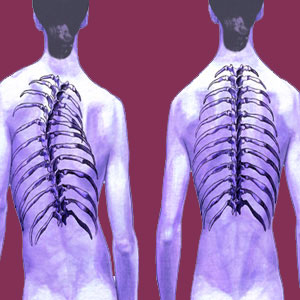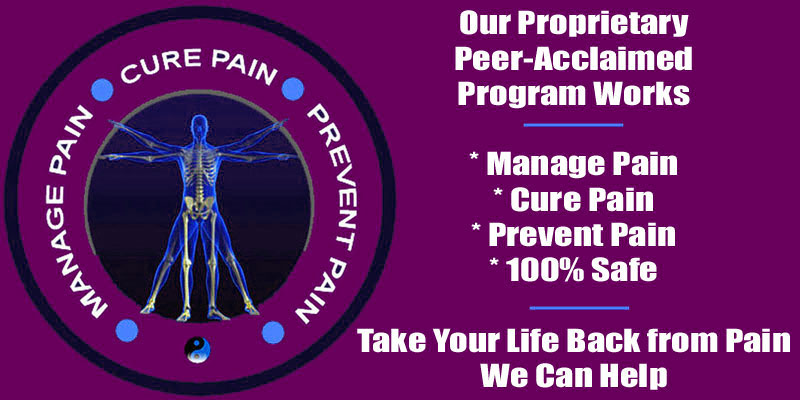
Scoliosis surgery is reserved for the very worst cases of truly pathological side-to-side curvature of the vertebral column. Most scoliosis does not require any treatment whatsoever and the cases which are indicated for therapy can usually be managed using progression suppressing or symptomatic modalities of care. Surgical interventions are kept in reserve for the few patients who have curvatures that are so severe and symptomatic as to justify the significant risks of the dramatic procedures utilized.
Scoliosis surgery that actually acts on the curvature in an attempt to reduce the degree of atypical curve will always be some type of spinal fusion, medically known as spondylodesis surgery. We have written much about this surgical technique throughout our many sites and have gained a reputation as an organization that is highly critical of the operation. Our view is very justified, since fusion is used for many diagnoses that do not require surgery at all and certainly do not demand such an invasive and functionality-changing procedure to be employed. However, for scoliosis, and a few other mostly curvature and spondylolisthesis-related diagnoses, fusion is the only option for patients with desperate conditions. Therefore, for the sake of these patients, we will provide the most objective and positive view of fusion possible, given its many inherent downsides.
This resource section covers the surgical interventions used to help scoliosis patients. We will focus on spinal fusion, but will also detail several techniques that can be used as invasive symptom-targeting care, such as nerve ablation. If surgery has ever been suggested to you in relation to a scoliosis condition, then this resource section will provide a meaningful education about your options, as well as the pros and cons of each choice.
The Use of Scoliosis Surgery
Scoliosis surgery is virtually never overused, unlike surgical techniques for most other spinal abnormalities. In fact, we find that doctors generally discourage scoliosis patients from undergoing surgery, unless there really is no other choice. This is already a huge improvement over care recommendations for virtually all dorsalgia issues, such as herniated discs, arthritis and facet joint deterioration. We come across an occasional patient who certainly did not require surgery, but was operated on nevertheless. However, this occurrence is rare, even given our correspondence with thousands of patients each month.
Surgery is usually considered for patients who have truly intractable pain that has been definitely linked to scoliosis, patients who are suffering dramatic functional losses due to scoliosis or patients who have compromised heart and/or lung function caused by scoliosis. We have seen many patients who have very severe visual presentations of scoliosis who are not indicated for surgery, since they do not have significant pain or general health problems as a result of their curvatures. Of course, some of these patients might still be offered surgery as a means of somewhat correcting posture and physical form, but many will pass on the chance, given the substantial negative consequences of spondylodesis surgery.
Symptom-targeting versions of surgery for scoliosis can be used to treat any patients who have severe pain, regardless of whether the symptomatic expression can be definitely traced to the scoliosis or not.
Spinal Curvature Surgery Topics
Below, we provide a comprehensive view of all the subjects related to scoliosis surgery. As each new dissertation is published, it will be added to the list beneath:
Scoliosis anterior spinal fusion allows frontal spondylodesis to be performed using a less invasive approach via incisions on the front or side of the torso. Anterior fusion can be performed alone or in combination with traditional posterior fusion, depending on specific patient needs.
Scoliosis posterior spinal fusion utilizes the classic dorsal incisions and hardware reinforcement of the vertebral column.
Scoliosis nerve ablation does nothing to resolve the spinal curvature, but can reduce pain when the patient is suffering symptoms related to scoliosis.
Scoliosis surgeons are specialists in fusion procedures and some even offer a variety of symptomatic invasive approaches to care.
What causes failed scoliosis surgery? Many surgical endeavors fail, leaving patients desperate and often irreparable.
Scoliosis Surgery Pros and Cons
When discussing symptom-targeting surgeries, there is usually minimal risk involved, outside of the already considerable general dangers of any operation. If a patient has intractable pain and has not enjoyed relief from more conservative measures of care, then nerve ablation or other symptomatic practice might be the next logical step to consider in the treatment path.
When discussing spinal fusion, the potentially positive benefits of fusion include a dramatic reduction in the degree of curvature, relief for internal organs that are suffering compression and maybe even reduction in pain suffered in association with severe scoliosis. The downsides of fusion include changes to the natural design of the spine, which can be pathological unto themselves. Patients will experience drastically escalated deterioration of spinal structures, as the natural engineering of the vertebral column is changed to prevent movement from one vertebral level to the next. The larger the fusion is, the worse this deterioration will be. Additionally, this loss of spinal movement will translate into a general reduction in possible range of motion across the entire anatomy. Patients will be subject to increased force from impact and increased risk of injury from almost any trauma. Hardware-related complications are common and might become fatal to select patients. Finally, a major of patients experience very severe postoperative pain after the large scale fusions utilized to treat scoliosis. Some patients have never experienced back pain prior to their surgeries, despite extreme scoliotic formations and are shocked that although their postural form might appear more typical, their pain levels are off the chart. All of these potential downsides, and more, are what keep doctors from casually endorsing scoliosis surgery as a preferred path for any patients who can possibly avoid it through any means necessary.
We are thrilled that our proprietary Cure Back Pain Forever Program has saved many patients from the horrors of spinal surgery. They still have scoliosis, but do not suffer any more pain.





